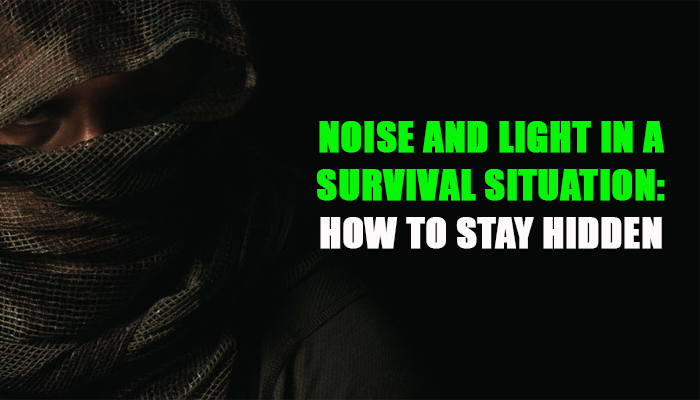
If you have served in the military then you are very familiar with the terms light and noise discipline. The military takes this seriously, as should you, or anyone else who has to move about at night and must stay concealed from an enemy or anyone that may be a bit too inquisitive.
Military vehicles have blackout lights mounted, which allow a driver to see the ground just a few feet ahead of them. The lights are hooded so you essentially have to be in a position to look up at them to see them because the light is focused primarily on the ground. The lights can be seen by other drivers and ground guides who help the driver navigate. Blackout tail lights are also used, and instead of the bright red light, they are typically diffused white lights that can only be seen from a few feet away.
Civilian vehicles, unless specially adapted do not have blackout lights, so driving at night can be hazardous without lights, and you still have the problem of the brake lights even if you run with the headlights off. Obviously driving at night is not recommended if you want to stay concealed.
If you have to position a vehicle at a campsite or bug-out-location at night, then you would have to disconnect the taillights and shut off the headlights and use ground guides that have red lens covered lights to help guide you into position. Running up and down the highway without any lights at all is very dangerous at night.
A military style flashlight typically has more than one lens that can be easily changed out.
The flashlight is shaped so when attached to your pack’s shoulder straps, it shines directly in front of you. A red lens would allow you to see a few feet in front of you while protecting your night vision at the same time.
A red light preserves night vision, while a blue light provides high contrast for map reading and taking a compass bearing, for example, and a green light improves visibility in forested regions and game animals are not spooked by the light if you have to night hunt. Infrared light is only visible through infrared goggles.
While a red light will not ruin your night vision nor can it be seen from a great distance, it will not, however, defeat Night Vision Devices (NVD’s). A special lens cover and/or light are required. There are certain lights that can only be seen by NVD’s.
The flame from a lighter or match lighting a cigarette can be seen by the naked eye from a great distance at night and if someone is searching using an NVD then a flare from a match or lighter is like a runway lighting up. The smoke from a cigarette can be picked up by the nose from several hundred feet away and even more if there is a breeze.
Regardless of the lens, if you have a way of concealing your light to read a map or compass then do so. Use a poncho, for example, or any type of heavy material to hood or cover the light near the ground.
Fires for cooking and water purification should only be used during daylight hours and never used in the same area you plan to stay at overnight. Calls of nature should be done before dark, as well as any eating, gear repair, and map reading if possible. It is always recommended that you stay put after dark, but if you do have to navigate then light and noise discipline is critical.
Noise
It’s impossible to move through the woods without making noise. All you can do is reduce/control the amount of noise. Tape or otherwise secure slings on your weapons, gear and all equipment you carry to keep loose parts from rattling.
Reduce talking and use ear buds when using communication devices. Nothing gives you away quicker than the crackling static of a radio. Keep communications between personnel to whispers close to the ear.
Vehicles, of course, give off noise so driving at night when others may hear you is certainly not recommended if you want to stay hidden.
Cell phones need to be set to vibrate and any chimes signaling a text or other action must be muted as well.
If you have to patrol, you should stop and listen periodically, not only does this stop the noise you are making but allows you to hear others moving about. The slapping of branches and the crunch underfoot of leaves and twigs can be heard by anyone in the area if they are listening.
Set up listening posts (LP’s) along the perimeter of your camp. These posts are static, usually only providing concealment and not cover unless you can build a bunker style post, but keep in mind being able to extract yourself quickly from the position must be given careful consideration. You also cannot block any sounds by surrounding yourself with protective cover. Observation posts (OP’s) on the other hand can be better fortified.
It takes practice to move at night without giving off a noise and light signature. You have to move more slowly, this means patience is required and you have to learn to stifle pain from a branch poking you or slapping you in the face, for example.
Your own breathing may prevent you from hearing just how noisy you are and also prevents you from hearing others that may be in the area. Learn to control your breathing and if you can’t navigate a few hundred yards without gasping for breath then work on your overall physical fitness.